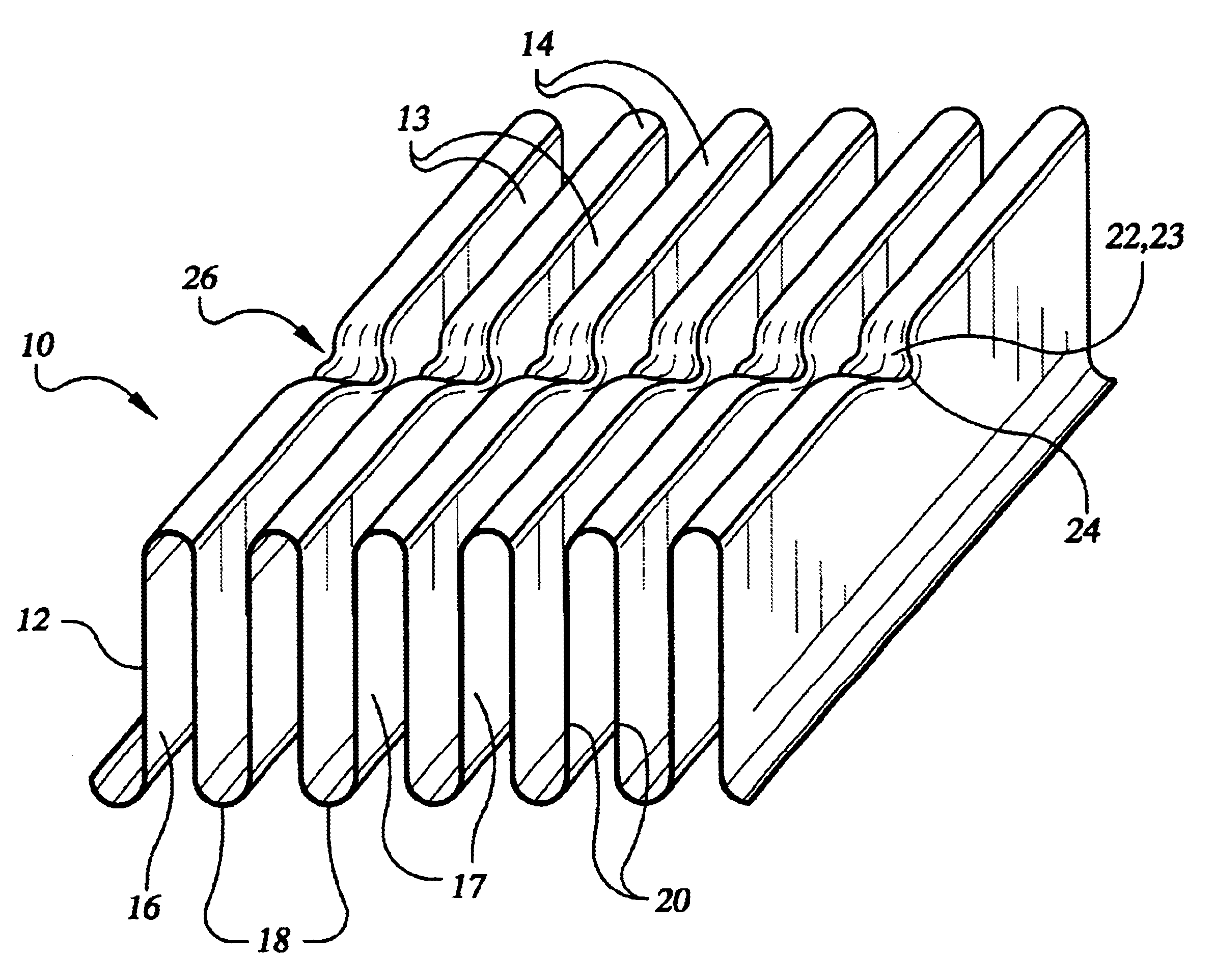Corrugated fin heat exchanger and method of manufacture
a heat exchanger and corrugated fin technology, applied in the field of corrugated fin heat exchangers and methods of manufacture, can solve the problems of increasing the cost of manufacture, limited contact area between the tube sections and the corrugated sheet,
- Summary
- Abstract
- Description
- Claims
- Application Information
AI Technical Summary
Benefits of technology
Problems solved by technology
Method used
Image
Examples
first embodiment
FIG. 2 shows the heat exchanger according to the invention, wherein the tube sections 28 are connected to coolant headers 29 so that the coolant flows through the sections in parallel.
second embodiment
FIG. 3 shows the heat exchanger according to the invention, wherein the tube sections 28 are connected in series by U-sections 31 to form a continuous serpentine tube.
FIG. 4 shows the first fixture 40, the second fixture 50, and the mandrels 60 which are used to form the channels 26 in the corrugated sheet 10. The first fixture 40 includes a base 42 to which first ribs 44 are fixed in parallel. The ribs may be manufactured separately and welded to the base, but the fixtures are preferably machined as integral units, preferably by EDM (electrical discharge milling) methods. Each first rib 44 has an edge 45 remote from the base, each edge being formed with notches 46, each notch 46 being aligned with notches in other first ribs to define forming channels 48. The notches 46 have an arcuate profile which substantially matches the profile of the depressions 22 to be formed in the corrugated sheet. The corners between the top edges 45 and the notches 46 are rounded to prevent damage to th...
PUM
| Property | Measurement | Unit |
|---|---|---|
| thick | aaaaa | aaaaa |
| heat | aaaaa | aaaaa |
| contact area | aaaaa | aaaaa |
Abstract
Description
Claims
Application Information
 Login to View More
Login to View More - R&D
- Intellectual Property
- Life Sciences
- Materials
- Tech Scout
- Unparalleled Data Quality
- Higher Quality Content
- 60% Fewer Hallucinations
Browse by: Latest US Patents, China's latest patents, Technical Efficacy Thesaurus, Application Domain, Technology Topic, Popular Technical Reports.
© 2025 PatSnap. All rights reserved.Legal|Privacy policy|Modern Slavery Act Transparency Statement|Sitemap|About US| Contact US: help@patsnap.com



